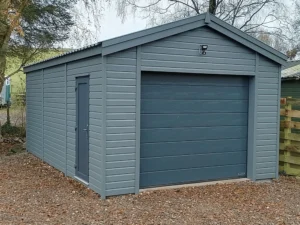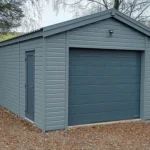Recovery can sometimes be pictured as four walls, a quiet room, and a steady routine. For some, that’s exactly what works. But in recent years, more treatment programs have been stepping outside — literally — to help people heal in wide open spaces. It’s not just about getting fresh air. It’s about movement, challenge, and finding parts of yourself that a chair in a therapy room can’t always reach. Outdoor experiential therapy is proving to be more than just a novelty; it’s becoming an anchor for a lot of people’s progress.
The Connection Between Challenge And Growth
There’s a particular alchemy that happens when your body and mind are tested together. Climbing a rock face, for example, forces focus in a way that leaves no space for overthinking. Whitewater rafting requires teamwork, trust, and the willingness to get drenched — literally and figuratively — in the moment. It’s not about being a daredevil; it’s about learning to move through discomfort without retreating. When you push through a steep incline on a hike, you’re not just building leg strength. You’re proving to yourself that you can meet resistance and still make it to the top.
Programs that prioritize outdoor activities tap into something deeply human. Movement in nature changes the internal conversation. Your surroundings become part of the therapy. The trail, the water, the weather — they’re all teachers. And for many, that feels far more real than sitting under fluorescent lights. For someone weighing options, experiential therapy at an alcohol rehab in San Antonio might be better than other options at a rehab in San Diego or somewhere else, simply because location can directly shape the quality of these experiences.
Nature As A Safe Place To Practice Vulnerability
Vulnerability is a word that gets thrown around a lot in recovery spaces, but it can feel slippery in practice. Outdoor experiential therapy offers ways to explore it without forcing a heavy conversation. There’s a certain honesty that comes from being on a trail with someone, both of you sweating and laughing, sharing the load of a backpack. Conversations can open up naturally, without the feeling that you’re “in session.”
Being outside also strips away the usual social armor. There’s no mirror, no screen, no tidy conference table. If it starts to rain, everyone gets wet. If you’re out of breath, it shows. That kind of shared imperfection makes it easier to let people see where you’re at — physically and emotionally. In a traditional therapy room, talking about trust can feel abstract. On a ropes course, you either lean into that trust or you don’t make it across. The lesson sticks because you lived it, not just discussed it.
The Mental Health Boost Of Moving Outdoors
There’s a mountain of research showing that exercise can lift mood, reduce anxiety, and sharpen thinking. Layer on the benefits of being in green spaces — lower cortisol levels, better sleep, and improved focus — and you’ve got a setting that’s naturally primed for mental health work. Outdoor experiential therapy uses this to its advantage. The activities are intentionally chosen not just for fun, but for their potential to rewire how participants approach challenges.
The body keeps score of stress, but it also keeps score of victories. Every time you reach a summit or paddle through choppy water, your nervous system gets a new memory: “I can do hard things.” Over time, that becomes a pattern. It’s not magic. It’s repetition. And when the setting is beautiful, the work doesn’t always feel like work. That shift alone can keep someone engaged longer than they might be in a purely clinical setting.
Building Real-World Skills Without A Lecture
One of the understated strengths of outdoor experiential therapy is how naturally it mirrors real-life problem solving. Navigation on a trail means making decisions without knowing exactly what’s ahead. Kayaking as a group means adjusting to other people’s pace and style. You can’t “fast-forward” through the slow parts or skip the tricky parts. And if something goes wrong, you have to adapt.
It’s in these unscripted moments that the work sinks in. A group that starts the day barely speaking to each other might end it swapping stories around a campfire. Someone who felt sure they’d freeze on a high ropes course might surprise themselves by crossing without hesitation. That’s confidence earned, not given. The skills aren’t limited to the outdoors, either. Communication, resilience, and patience follow you back into daily life. That’s why even in more urban settings, programs are adding day trips and weekend excursions into their schedules. A short burst of outdoor challenge can create breakthroughs that weeks in a chair sometimes can’t.
In some programs, outdoor sessions are paired with more traditional approaches, including IOP schedules. This balance can be especially effective for people who need both the stability of structured therapy and the unpredictable lessons of real-world challenges. It’s not about replacing one with the other; it’s about letting them inform each other in a way that feels dynamic instead of rigid.
Why The Future Of Recovery Might Live Outside
As more programs track the outcomes of outdoor-based experiential therapy, the evidence keeps pointing in the same direction: people stick with it, people engage more fully, and people leave with a stronger sense of self. That doesn’t mean every day is a mountaintop moment. Sometimes it’s wet socks, sore muscles, and learning how to keep going anyway. But that’s also the point. Life after treatment isn’t always smooth, and these activities offer a safe space to practice rolling with the unexpected.
Another reason outdoor programs are gaining traction is accessibility. You don’t need to be an athlete to benefit. Activities can be scaled to any fitness level. A gentle nature walk can be just as therapeutic as a strenuous climb, depending on the person. The common thread is participation — showing up, stepping out, and letting the experience do its work. Whether it’s a week-long wilderness trip or a single afternoon in a local park, the shift in setting has a way of opening new possibilities for growth.
Moving Forward
The idea that healing can happen in the open air isn’t new, but the way it’s being integrated into recovery programs feels fresh and deliberate. As treatment centers continue to rethink how they keep people engaged, the outdoors offers a canvas that’s both adaptable and infinite. When therapy leaves the walls behind, it can meet people where they’re most open to change — in the middle of a challenge, surrounded by nature, moving toward something better with each step.
Also Read-What Your Mouth Says About Your Overall Health










